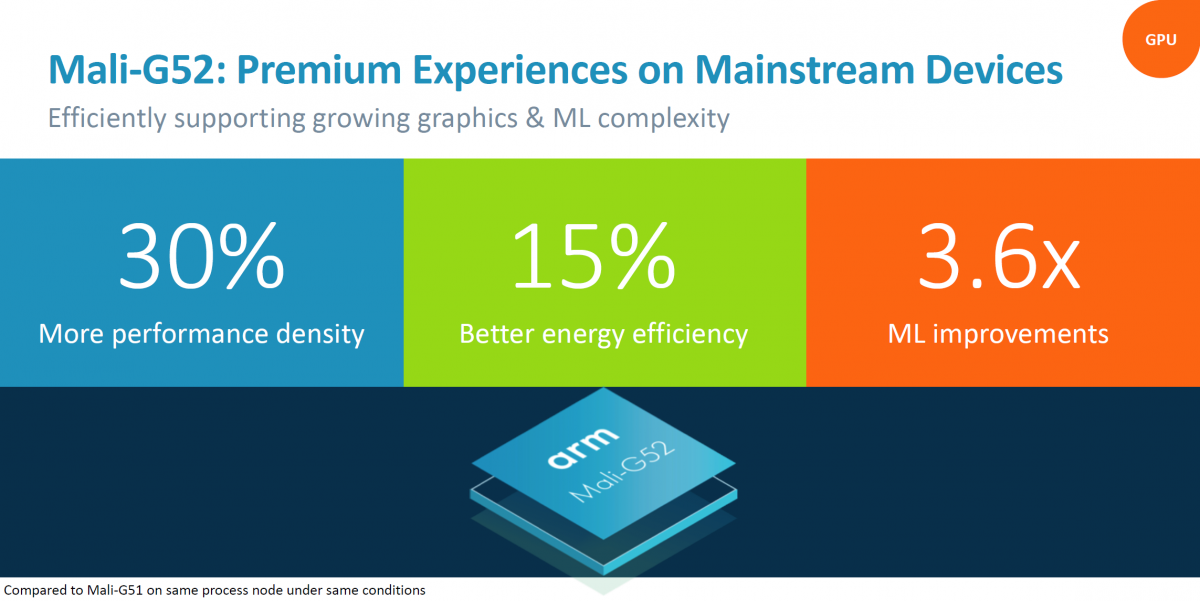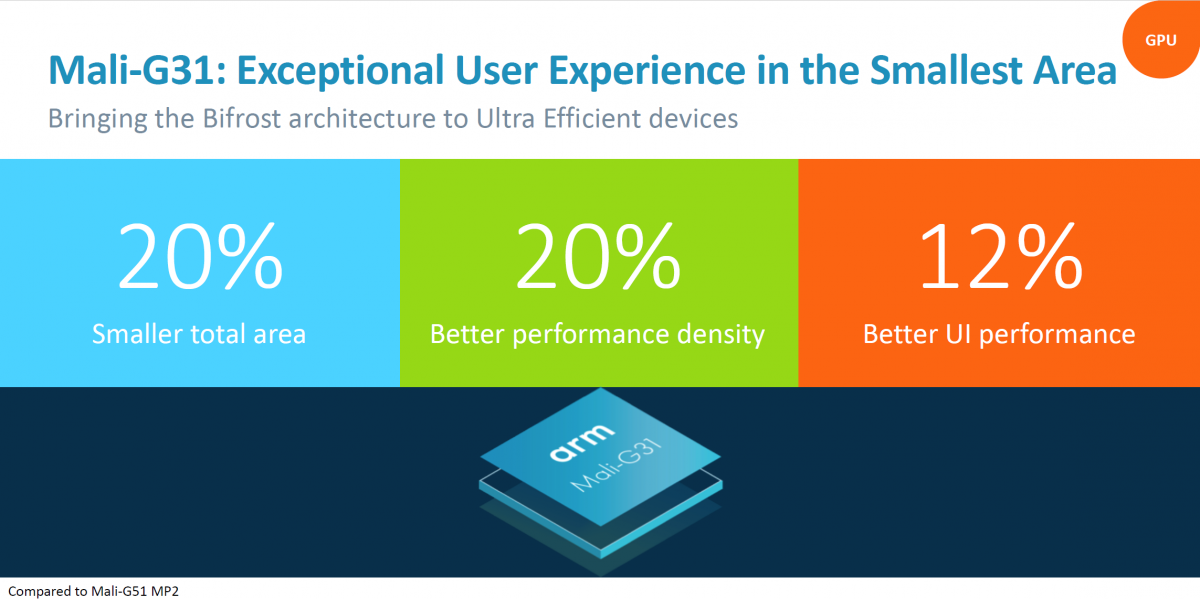ARM, which was acquired by Softbank in 2016, is a British holding company that develops and licenses the system-on-chip (SoC) architectures in billions of smartphones, set-top boxes, and Internet of Things (IoT) gizmos. Its technologies form the foundation of SoCs from Samsung, MediaTek, and HiSilicon, and those partners and others have shipped more than 125 billion chips to date. (ARM expects that number to reach 200 billion by 2021.)
On Tuesday, following the announcement of the Mali-D71 display processor and Assertive Display 5 in November, ARM unveiled four new chipsets: The Mali-G52/G31 graphical processing units (GPU), the Mali-D51 display processor, and the Mali-V52 video processor.
The Mali-G52, the successor to the Mali-G51, has 30% more “performance density” (fps/mm²) thanks to wider execution engines (up to three, depending on the configuration). It's got eight ALU pipelines within its execution engines instead of four (each of which can handle 8-bit dot product operations), and it delivers 3.6 times the machine learning performance. But it’s also more energy-efficient than its predecessor. According to ARM, the Mali-G52 consumes 15% less power and produces substantially less heat than previous-generation GPUs.
The Mali-G31, a slight step down from the Mali-G52 in terms of raw performance, is the first in ARM’s Ultra-Efficient GPU lineup built on the Bifrost architecture, which features a redesigned scalar and clause-based ISA, quad-based arithmetic units, and a new geometry data flow that reduces memory bandwidth. As a result, the Mali-G52 is 20% smaller and boasts 20% better performance density than the Mali-G51 (and 12% better UI performance), and has the distinction of being the smallest processor to support both OpenGL ES 3.2 and the latest-generation Vulkan API.
ARM says it's increasing its content developer resources for APIs such as Vulkan, and working with Google to ensure GPUs such as the Mali-G51 and Mali-G31 work seamlessly with ARCore.
On the display processor unit (DPU) front, ARM took the wraps off the Mali-D51, the first DPU based on the chip maker’s Komeda architecture. It’s 30% more power-efficient than previous-generation designs and has 50% better memory latency, plus support for eight full layers of scene complexity. And when paired with ARM’s outdoor display technology, Assertive Display 5, it’s able to drive high dynamic range (HDR) screens. (The firm says it's also "fully optimized" to work system memory management units such as the CoreLink MMU-600.)
The last chip ARM announced today, the Mali-V52, is the company's latest-generation video processor. It doubles decode performance and delivers 20% better upload quality, which ARM claims results in “clearer” and “crisper” 4K video at 60 frames per second (FPS)—all in a silicon area that's 38% smaller.
The Mali G52/G31, Mali-D51, and Mali-V52 designs have been made available to OEM partners, ARM says. If all goes according to plan, expect to see them in future phones, set-top devices, and more later this year.



